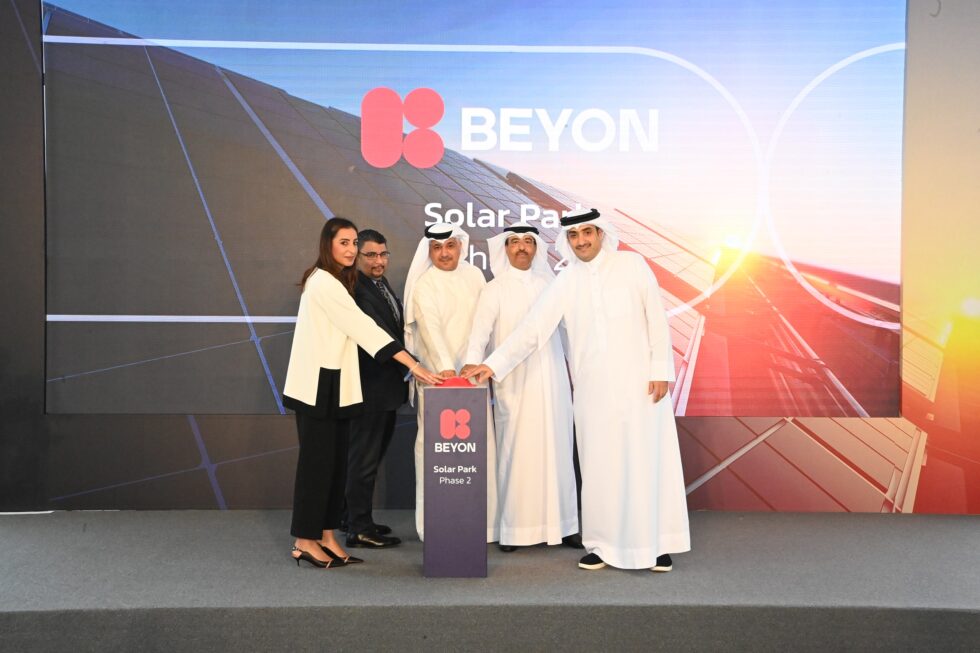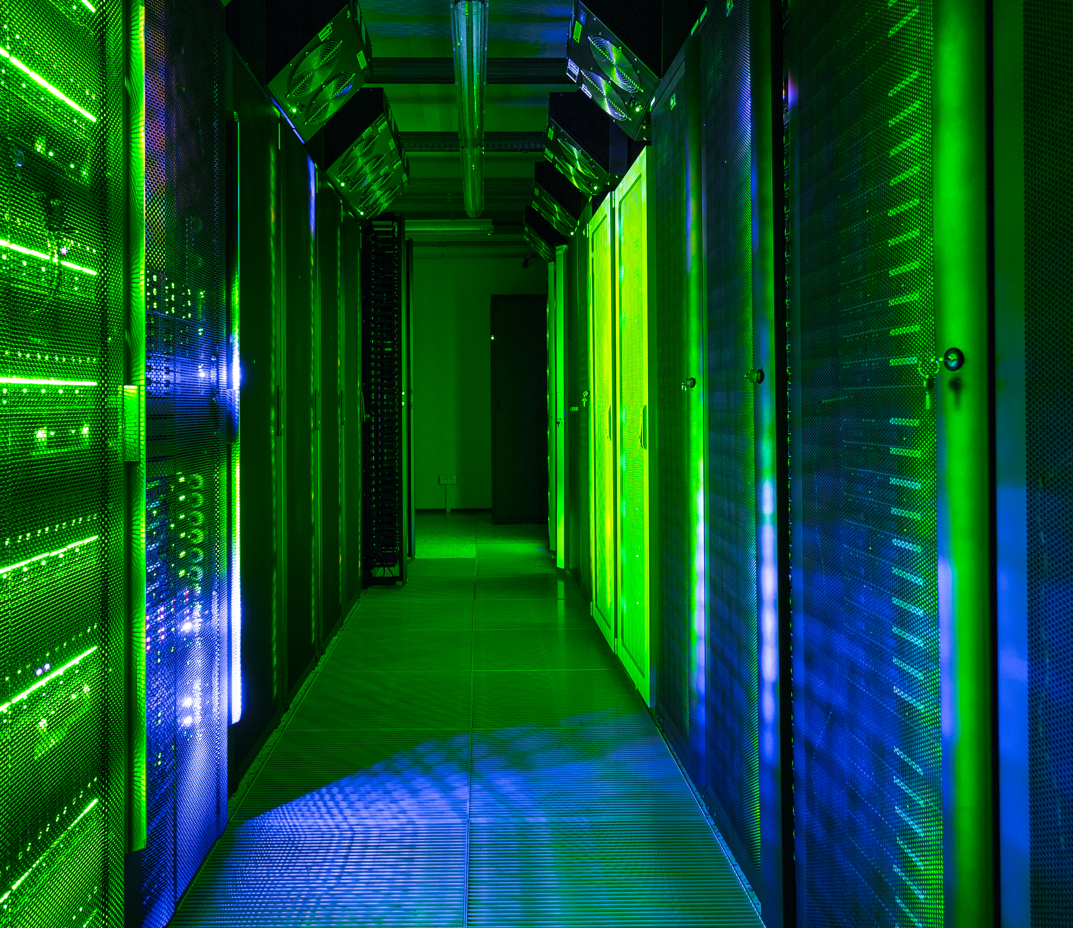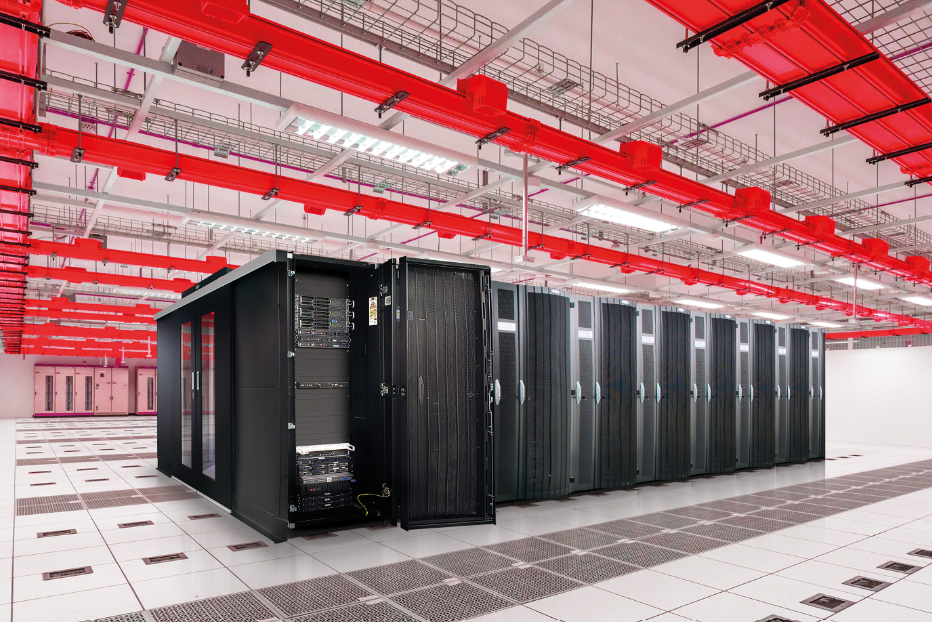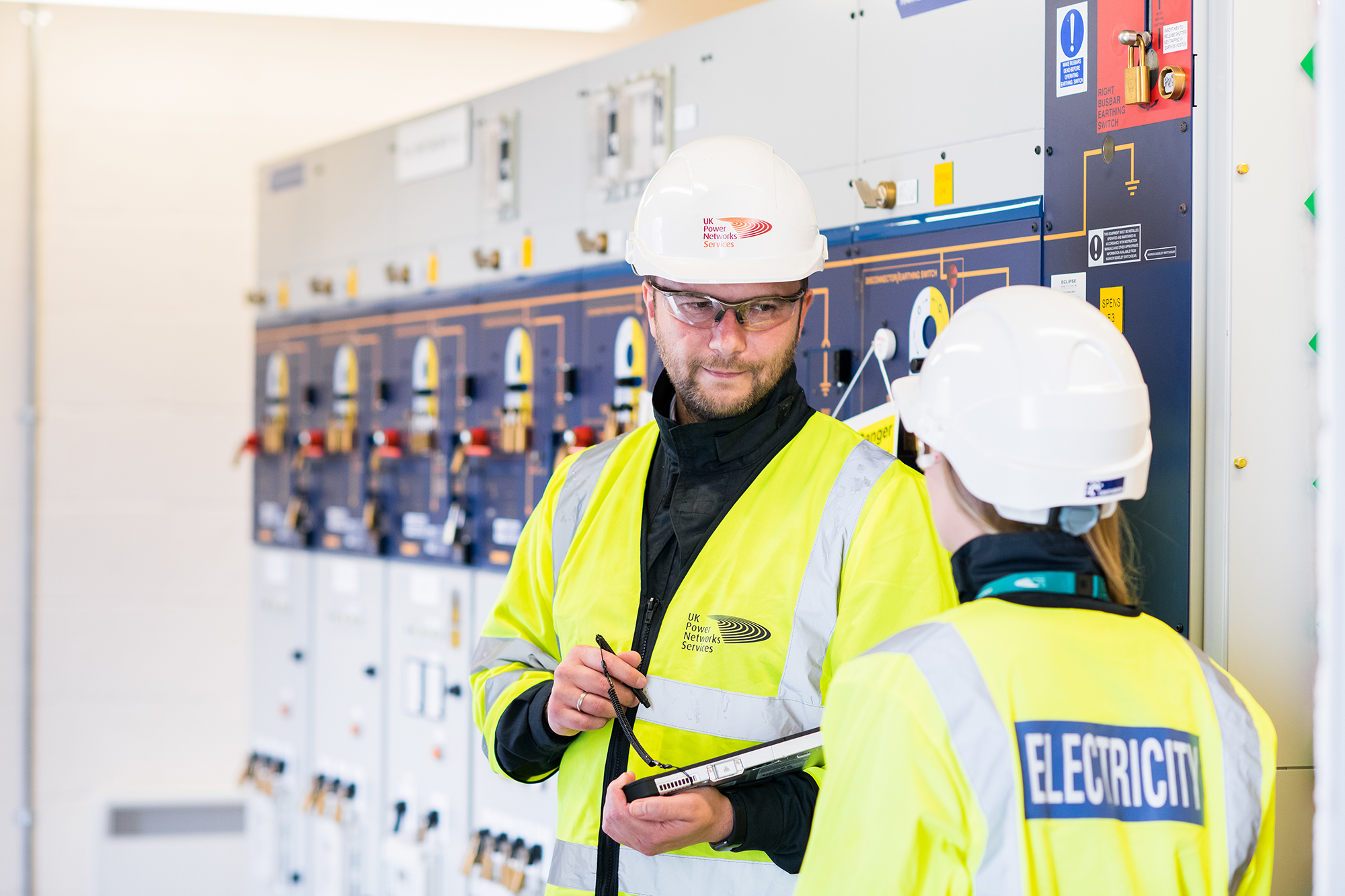Energy Management
Data Centres
Energy Management
Green IT
First data centre in Bahrain to be fully powered by clean energy
Beyon’s Chairman, Shaikh Abdulla bin Khalifa Al Khalifa, has announced the completion of Phase 2 of the company’s Solar Park at a ceremony which recently took place in the presence of H.E. s Kamal Bin Ahmed Mohamed, President of Electricity and Water Authority; H.E. Mohamed bin Thamer Al Kaabi, Minister of Transportation and Telecommunications; H.E. Yasser bin Ibrahim Humaidan, Minister of Electricity and Water Affairs; H.E. Mrs. Noor Bint Ali Al Khulaif, Minister of Sustainable Development; and Mr Mohamed Almoayyed Director YK Almoayyed & Sons.
The event was held at the Royal Golf Club in Riffa, where members of Beyon’s board of directors, executive team and team members involved in the project were present on the occasion.
Beyon’s Chairman welcomed the distinguished guests and extended his appreciation for their attendance at the inauguration of Beyon Solar Park.
Speaking on the occasion, he said, “Beyon’s efforts towards sustainability and clean energy production continues, and we have made great progress since the launch of the first phase of the Solar Park in November 2021. Today we are glad to announce the completion of the second phase of the project.
“We are also very proud of an unprecedented achievement in the telecommunications and technology sector, as Beyon’s Data Centre became the first in Bahrain to rely entirely on clean energy generated from the company’s Solar Park, which is located in the Beyon Data Oasis.
“Our journey in the field of environmental sustainability continues in line with our commitment to Bahrain’s vision launched by His Royal Highness Prince, Salman bin Hamad Al Khalifa, Crown Prince and Prime Minister of the Kingdom of Bahrain, and announced as part of his address during the 26th United Nations Climate Change Conference 2021, held in Glasgow, Scotland, which reiterates the Kingdom’s commitment to achieve zero carbon neutrality by 2060. Thus, we have set clear plans to start implementing the third phase of this project, which will be located in Hamala. Upon completion of this phase, the total clean energy production of Beyon will be approximately 6GWh per year.
“On this occasion, I would like to extend my sincere thanks to the Ministries, concerned authorities and our partners for their invaluable support in helping us implement this project and contributing to its success,” Shaikh Abdulla concluded.
Beyon’s Solar Park Phase 1 and 2 will generate 3.6GWh of clean energy leading to a carbon footprint saving of over 2000 tonnes and a cost saving of BD105,000 annually.
Isha Jain - 5 June 2023
Energy Management
Reducing the carbon footprint of data centre standby power
The IEA estimates that the energy consumption of data centres comprises around 1% of final electricity demand globally. This figure is understood to rise as high as 4% in the UK and Ireland to reach 15%. There is a clear consensus and impetus within the industry to move to carbon free technology. For example, Google has stated its objective to operate on 24/7 100% carbon-free energy by 2030.
Focus is given, understandably, to how energy demands for key applications such as cooling can be reduced, increasing supply from renewable sources such as solar or wind power. But if data centre operators are to truly run on 100% carbon-free energy, then all methods of energy consumption must be considered.
This should include how standby power is generated, with a clear roadmap established to ensure a transition to low and carbon-free energy without compromising the critical role this plays in keeping assets running during energy outages or times of unpredictable supply. Finning has been working closely with a number of major industry players to establish the best solution to achieve this.
Balancing reliability with sustainability
Current reliance on diesel generators for standby power is well established, primarily because of their practical benefits. They are readily available, reliable as a mature technology and able to quickly ramp-up to seamlessly cover issues with main power supplies.
Given that data centres must mitigate any risks that may be posed to maintaining mission critical services for the likes of hospitals and other public services, the advantages in terms of reliability that existing technology offers must be carefully considered as we transition away from fossil fuels.
Indeed, in the understandably risk-averse data centre sector we are likely to see a phased transition to a balance between maintaining the benefits of existing technology, with the importance of using carbon-free energy.
HVO providing a smart first step
A first step in this transition is the growing use of Hydrotreated Vegetable Oil (HVO). Produced from certified waste fats and oils, HVO is manufactured using a synthesised process with hydrogen to offer a more sustainable alternative to fossil fuels. Although not entirely carbon-free, HVO can eliminate up to 90% of the carbon emissions caused when compared with the production and use of conventional diesel.
Another key advantage is that it can be used as a drop-in replacement for diesel in many engines, as well as used with existing diesel or biodiesel stocks. For example, provided the fuel meets standard requirements, Caterpillar generators built after the year 2000 are able to run on HVO.
Given the ease with which they can be integrated into existing assets, Finning has seen growing interest from data centre operators in the use of HVO in tandem with diesel to lower the carbon footprint of their standby generators.
Whilst use of HVO with conventional diesel has been the most common approach, there have been high profile cases where a move to 100% HVO has been taken - allowing even greater reductions in carbon emission. Last year, Microsoft announced that all Cat generator sets at its new data centres being constructed in Sweden would run on HVO, providing the final element to obtaining all of its energy needs from renewable sources.
Longer term benefits of hydrogen
Whilst HVO is a convenient and highly effective drop-in replacement for existing diesel equipment, it is not entirely carbon-free. Furthermore, the sheer scale of demand for fuel means that it is unlikely to become a permanent solution, due to its production being limited by how much vegetable oil and fat is available globally.
Hydrogen has been touted as a more likely long-term solution, with advances in blue (the splitting of natural gas into hydrogen and CO2, with the resulting carbon captured) and green (splitting water by electrolysis into hydrogen and oxygen) production set to help create the volumes needed to replace fossil fuels on a global scale.
Whilst those production volumes are yet to come, plans are in action, and it is an area that data centre operators should explore when looking at the next generation of sustainable equipment. As with HVO, a blended approach may be the likeliest next step with gas gensets configured to allow for a blended fuel containing up to 25% hydrogen.
Manufacturers such as Caterpillar are rolling out gas generators configured out-of-the-factory to enable operation on natural gas blended with hydrogen. Adaptation of existing gensets can be done with the use of retrofit kits for some equipment, making it an appealing quick win as hydrogen availability increases.
Rising industry interest and development of hydrogen supply infrastructure means that 100% hydrogen gensets are in advanced stages of development and we will likely see trials of this equipment in the near future.
Where next for data centres?
For those that haven’t already adopted it, HVO is the next natural step to take as trials on 100% hydrogen gensets move forwards. Adding Selective Catalytic Reduction (SCR) can also make a notable difference in minimising emissions.
Finning says it is also seeing a growing number of new sites considering the use of a microgrid system which allows a combination of power generation sources (photovoltaic solar modules, energy storage, gas and diesel). Smart microgrids mean efficient power that can be produced where and when it's needed without transmission lines and transformer losses. These high performance, scalable systems are designed and built using standardised building blocks that are easy and quick to install even in challenging environments.
With the potential risk if transition of standby power is not delivered smoothly, it’s also critical to ensure you have the right partner to identify the best solution for your specific requirements. Working with a specialist such as Finning means you can not only access this invaluable expertise and advice but also gain insights into the latest testing and performance information as newer technology such as hydrogen gensets are brought to market - helping you to get maximum uptime with minimum carbon emissions.
Beatrice - 1 August 2022
Energy Management
How data centres can tackle their environmental impact
By Inspired Energy
Environmental impact is something more and more data centres are looking into as part of the Climate Neutral Data Centre Pact, where data centres commit to become climate neutral by 2030. Alongside this, the demand for data centres is increasing, with data becoming the new fuel as we continue to innovate and rely more on data and technology in our day to day lives.
But how can data centres tackle their environmental impact without affecting efficiency?
Tackling the environmental impact
With many data centres having already developed net zero and heat decarbonisation plans, here are some key areas of focus to tackle environmental impact without impacting efficiency:
Greenhouse gas (GHG) emissions
GHG emissions are a main measure for many businesses on their journey to net zero, however data centres are often measured by carbon intensity. This metric provides a relative comparison of GHG emissions characteristics after factoring in the scale of a business and the emission rate.
Most businesses are already reporting on their Scope 1 and 2 emissions, and only large LLPs are required to report on some of their Scope 3 emissions under the Streamlined Energy and Carbon Reporting (SECR) scheme. Although some businesses are voluntarily reporting their Scope 3 emissions as it’s likely they will become mandatory in the future. Data centres who report on their Scope 3 are demonstrating their commitment to sustainability as one of the largest energy consumers.
Sourcing renewable energy
As energy intensive users, data centres are turning towards renewable energy to support their net zero commitments. Some larger data centres are securing renewable energy partnerships to power their sites.
Renewable energy procurement can help to reduce or even eliminate Scope 2 emissions and there are a number of purchasing options. A virtual or physical Corporate Power Purchase Agreement (PPA), where renewable energy is purchased directly from an energy generator, or green tariffs secured through an energy provider are also another route to sourcing renewable power, along with on-site generation and renewable energy certificates.
Calculating your Power Usage Effectiveness (PUE)
Data centres should look to optimise their PUE score to achieve maximum efficiency by reducing the amount of energy used for anything other than running equipment. Data centres looking to reduce their PUE may find it challenging to reduce both costs and improve their environmental impact. However, there are ways to optimise PUE:
Allowing server rooms to operate at a higher temperatureReducing the density and therefore energy consumed per square metre - this helps to dissipate heat but can be counteractive to other practicesImprove the flow of cool air in computer rooms through containment solutionsOptimising the production of cool air through combined use of outside air and heat exchangersLocating data centres in the Artic or under the sea
Cooling
Data centres use water for cooling their equipment in cooling towers. Many servers in a hyperscale data centre require a larger cooling capacity but water consumption varies due to the climate and the type of cooling system used.
Large data centres may rely on evaporative cooling which uses less energy, but the process requires more water - often the preferred approach as it’s less expensive. Whilst data centres need to start paying attention to their water consumption and WUE, they should also explore how to use water more efficiently. From increasing cycles of concentration in cooling towering to switching to chemical treatments to demineralise evaporating surfaces and recommissions to reduce cool load.
Hardware
Hardware can also be a part of the solution when it comes to reducing emissions whilst ensuring performance efficiency. New processors to increase computing power without increasing energy consumption isn’t far off as the ongoing ‘arms race’ between chip-makers encouraged innovation of the energy computing ratio. Not only this but updating old, outdated, broken and inefficient equipment is also part of supporting the overall efforts to tackling environmental impact.
Software
AI software can also play a role by supporting data centres to better manage their infrastructure and maximising the utilisation of their CPUs. This will help to mitigate and alleviate consumption issues and deliver energy savings. Improving CPU performance will help data centres keep up with demand for data processing and help reduce the number of processors they need to achieve the same or more computing processes. Data storage can also be optimised to reduce environmental impact.
Working through these key areas of focus, your data centre can tackle its environmental impact to further its progress to carbon neutral by 2030.
Beatrice - 1 August 2022
Energy Management
Smart power management in buildings and data centres
By Matthias Gerber, Market Manager LAN Cabling, Reichle & De Massari and Carsten Ludwig, Market Manager DCr, Reichle & De-Massari AG
Regulations regarding energy savings required to reach climate goals are becoming increasingly stringent. Recent research from Deloitte shows that buildings are currently responsible for 30-40% of all urban emissions. This must be reduced by 80-90% in order to achieve COP21 targets by 2050. Using intelligence in digital buildings is essential to achieving this. However, according to the BSRIA ‘Trends in the global structured cabling markets’ report (April 2022), no more than 1-2% of buildings deploy cutting edge smart technologies. Buildings everywhere need to be renovated and managed smarter.
For buildings to become more energy efficient, they need to become smarter. All energy needs to be used wisely and not wasted on anything that might be considered unnecessary - an intelligent building connects all devices, automates processes and leverages data to improve performance. Intelligent buildings continuously learn, adapt and respond. This can highlight areas where energy usage is being wasted and help find solutions so that HVAC systems, smart lighting, and other in-building systems (sensors) reduce their energy consumption. This approach makes it possible to better manage resources and utilities.
Sensors provide the foundation for intelligent buildings. Today, almost every device can function as a sensor. In the past, every system would have its own sensors, but these didn’t exchange data or interact. In the smart home environment, we’re seeing something similar today: numerous ‘island’ solutions, with each manufacturer using their own platform and integrated devices. However, it makes more sense to use an existing sensor in an installed device, instead of adding the same type of sensor to multiple devices.
Convergence is now allowing information from individual devices to be used to optimise the performance of other devices and the system as a whole. The converged network brings IT and OT together. Security protocols can run from enterprise servers, removing the need for protection of individual networks. One single interface and dashboard can be used to manage and control lighting, heating, ventilation and security.
An ‘all-IP’ network allows all devices to use one common language, supporting integration and optimisation. All building technology and building management devices communicate in the same way, without barriers, over Ethernet/Internet Protocol (Ethernet/IP), with the LAN providing the basis for physical communication. IP-based convergence enables sharing of resources across applications and brings standardisation, availability, reliability and support for new deployments.
The ‘digital ceiling’ concept supports ‘All over IP’ implementations. The data network and PoE are extended through an entire building’s ceiling, making it possible to connect building automation devices within defined zones with pre-installed overhead connecting points. The ‘digital ceiling’ will increasingly provide services that building occupants and managers are going to need in the near future and for years to come, enhancing user experience while reducing energy usage, making maintenance and adding new devices faster and easier, lowering installation and device costs, and increasing layout flexibility.
A closer look at energy management in the data centre
Data centres are responsible for some 2% of greenhouse gas emissions, which is almost the same as the entire global airline industry. For some time, designers and operators have been using the Greenhouse Gas Protocol, developed by businesses, NGOs, government bodies and other stakeholders to evaluate their supply chain and performance. Similar initiatives such as the recently published Climate Neutral Data Centre Pact, initiated by CISPE, point the way ahead for the data centre industry.
Besides security, energy and (especially) cooling are key talking points in the data centre industry. Of every kilowatt used in the DC, the biggest portion is turned into heat. You can improve power efficiency by using more efficient equipment and thereby reduce heat production, but there is always some excess heat. The question is how to deal with this heat in a way that results in the least environmental harm.
One approach is using liquid-cooled PCBs so that components on the circuit board don’t heat up and, therefore, don’t pass on heat to the chassis or rack. This uses dedicated horizontal pre-terminated rack boxes which have connections for fibre and copper, cooling fluid and power. However, you will need specialised hardware for this, that will be difficult to swap out when you want to make changes. Cooling precisely at source is very efficient. By cooling individual components, heat is reduced, and their operational lifetime improves. This approach is complicated and requires some preparation based on the needs of individual applications, the nature of the business the hardware is used for, and the business case.
Another way of dealing with heat is distributing the components across a wider area. Concentrating as many racks as possible in a huge data centre may bring economies of scale and some practical benefits, but it also concentrates a vast amount of heat production in one space - and isn’t always technically necessary. When hardware becomes outdated or a new user needs to be connected, edge hardware could be moved from, for example, a mid-sized enterprise customer location to a hyperscale facility. Later, it might even be moved from the mid-sized location to an even smaller private location.
Intelligent architecture that carefully considers hot and cold aisles is another approach. The less room you need to cool, the less energy you need. Bad examples can be found, with huge rooms being cooled, even though they house just one small containment in a corner. The airflow is a mess in such a case, and the use of energy is extremely inefficient. Cooled air needs to be as close to the equipment as possible and should only cool targeted areas.
Wherever DCIM software is used, the company sees power and cooling monitoring engaged as a minimum. In fact, often these are the ONLY monitored KPIs. Not only does this help avoid energy waste but it also improves stability of the system, avoiding malfunctions or even fires. If connectivity doesn't work, performance is harmed, but there’s no physical danger to the system or to people. However, not knowing the status of power and cooling can lead to real damage.
It’s also interesting to consider the true price of all the data we’re generating. Many people are wondering why we’re spending so much power on storing. Some don’t realise how much power their phones, tablet and computers use, and how much energy it requires to transport and store all this data. Maybe it would be good if we thought about the environment every time we posted something online!
Beatrice - 1 August 2022
Energy Management
Scope 3 emissions: the time for bold leadership is now
By David Craig, Chief Executive Officer, Iceotope
Technology offers us a path forward to meet the demands of the current climate challenges. The real question becomes, do we have the leadership to embrace it?
Lately, it seems as if every time we scroll through our news feeds, we are confronted with the realities of climate change. Europe is in the midst of the worst energy crisis in decades, even prior to the war in Ukraine, exasperating the situation. The Intergovernmental Panel on Climate Change (IPCC) is regularly issuing reports on the severe impact of climate change on global society. Weather patterns around the world are becoming more extreme, resulting in fires, floods and more powerful hurricanes than ever before.
The best corporations don’t just want to be seen as doing the right thing, but genuinely are doing the right thing when it comes to climate change. Businesses and industries have begun to track their carbon emissions through the Greenhouse Gas (GHG) Protocol, a widely sponsored international standardised framework to measure greenhouse gas. The protocol divides the emissions into three different scopes, commonly defined as:
● Scope 1 - direct emissions from owned or controlled sources.
● Scope 2 - indirect emissions from the generation of purchased electricity, steam, heating and cooling consumed by the reporting company.
● Scope 3 - all other indirect emissions that occur in a company’s value chain.
Today, the scopes are designed to be voluntary. Scopes 1 and 2 are relatively easy for a company to own and track. Scope 3 goes to the level of actually understanding the carbon lifecycle of your entire footprint from cradle to grave. The corporate value chain measures Scope 3 emissions across 15 different categories from goods and services to transportation to business travel to end-of-life product disposal. For many companies, this accounts for more than 70% of their carbon footprint. Companies that are signing up to Scope 1 and 2 will absolutely insist that their supply chains do so as well.
For data centre users, this can be a bit tricky, particularly when it comes to the cloud, where GHG emissions can be harder to calculate. When workloads are moved to the cloud, an organisation is no longer generating direct emissions or purchasing energy, both of which are covered under Scope 1 and 2 emissions, respectively. Those emissions are now part of Scope 3. Add to that, a significant proportion of carbon emissions across computing platforms actually come from hardware manufacturing as well as operational system use. Meta recently shared meta-analysis of sustainability reports and life cycle analyses from researchers identifying this trend. Despite improvements in software and hardware efficiencies, a mobile device, for example, may need a three year longer lifespan to amortise the carbon footprint created by their manufacture.
The good news is there are solutions data centre operators can incorporate that immediately help in reducing carbon emissions. One solution is precision immersion liquid cooling. Liquid cooling offers the ability to reduce infrastructure energy use by 40%, slash water consumption by greater than 90% and improve pPUE to 1.03, which is further enhanced by server energy reductions often of 10% and more. Alternate forms of power generation, such as hydrogen fuel cells, are quickly becoming economically viable alternatives to UPS and diesel generators. Microsoft has been testing and implementing the technology and sees long term benefits beyond reducing carbon emissions.
What all of this requires, however, is the courage to lead. Many of these ‘low hanging fruits’ are new ways of doing business. They are moving away from a well-known technology solution to one that has greater perceived risk. Now is not the time for incrementalism. We are facing a global climate crisis and need bold leadership to make hard choices and take swift action. There is a real competitive advantage opportunity for companies willing to adopt new technologies and find a new way to do business.
A business doesn’t grow by cutting back. A Gartner study from 2019 shows what differentiates winning companies in times of change, stating “first, progressive business leaders prepare to navigate turns even before the turns are clearly in view. Second, their mindset and actions before, during and after the turns separate their organisation from the pack and determine its long-term destiny.” Those that invest when change is happening are the companies that rocket and accelerate out of the downturn.
The Scope 1, 2 and 3 protocols create a language, a framework and an expectation. In other words, they create an opportunity for businesses to navigate one of the biggest technology challenges we will face this decade. Governments, particularly in the UK and Europe, are committed to net zero initiatives and ensuring they are met. The public is embracing the seriousness of the crisis and the youth of today will hold us all accountable.
It’s no longer about optics, but rather our competitive ability to survive and keep our planet healthy. Technology will play a significant role in this. Those who will become the heroes of this story are those who demonstrate bold leadership and embrace the changes that need to come.
Beatrice - 1 August 2022
Energy Management
Identifying and evaluating the real embodied carbon cost of a data centre
By Ed Ansett, Founder and Chairman of i3 Solutions Group
Global emissions from new-build projects are at record levels. Consequently, construction is moving further away from, not closer to, net zero buildings. With the current focusing very much on the carbon footprint of facility operations, a new white paper presents the case for taking a ‘Whole Life Carbon’ approach when assessing the data centre carbon impact.
According to the United Nations Environment Programme (UNEP) the carbon cost of building is rising. The UNEP Global Alliance for Buildings and Construction (GlobalABC) global status report highlighted two concerning trends: firstly, that ‘CO2 emissions from the building sector are the highest ever recorded…’ and, secondly, ‘new GlobalABC tracker finds the sector is losing momentum toward decarbonisation.’
Embodied carbon costs are mainly incurred at the construction stage of any building project. However, these costs can go further than simply the carbon price of materials - including concrete and steel - and their use. And while it is true that not all buildings are the same in embodied carbon terms, in almost all cases these emissions (created at the beginning of the building lifecycle) simply cannot be reduced over time.
Since this is often, and in some cases, especially true in data centres, it is incumbent to consider the best ways for the sector to identify, consider and evaluate the real embodied carbon cost of infrastructure-dense and energy-intensive buildings.
Technical environments and energy-intensive buildings such as data centres differ greatly from other forms of commercial real estate, such as offices, warehouses and retail developments. Focusing on the data centre, let’s take for example a new build 50MW facility. It is clear that in order to meet its design objective it’s going to require a great deal more power and cooling infrastructure plant and equipment to function in comparison with other forms of buildings.
Embodied carbon in data centres
Embodied carbon in a data centre comprises all those emissions not attributed to operations, as well as the use of energy and water in its day to day running. It’s a long list which includes emissions associated with resource extraction, manufacturing, and transportation, as well as those created during the installation of materials and components used to construct the built environment.
Embodied carbon also includes the lifecycle emissions from the ongoing use of all of the above, from maintenance, repair and replacements to end-of-life activities such as deconstruction and demolition, transportation, waste processing and disposal. These lifecycle emissions must be considered when accounting for the total carbon cost.
The complexity of mission critical facilities makes it more important than ever to have a comprehensive process to consider and address all sources of embodied carbon emissions early in design and equipment procurement. Only by early and detailed assessment can operators inform on the best actions which can contribute to immediate embodied carbon reductions.
Calculating whole life carbon
Boundaries to measure the embodied carbon and emissions of a building at different points in the construction and operating lifecycle are Cradle to Gate; Cradle to Site; Cradle to Use and Cradle to Grave carbon calculations, where ‘cradle’ is referenced as the earth or ground from which raw materials are extracted.
For data centres, these higher levels of infrastructure are equipment-related, additional, and important considerations because in embodied carbon terms they will be categorised under Scope three of the GHG Protocol Standards - also referred to as Value-Chain emissions.
Much of the Scope three emissions will be produced by upstream activities that include and cover materials for construction. However, especially important for data centres, is that they also include the carbon cost for ongoing maintenance and replacement of the facility plant and equipment.
That brings us to whole of life calculations which will combine embodied and operational carbon.
Combining embodied and operational emissions to analyse the entire lifecycle of a building throughout its useful life and beyond is the Whole Life Carbon approach. It ensures that the embodied carbon (CO2 emissions) together with embodied carbon of materials, components and construction activities are calculated and available to allow comparisons between different design and construction approaches.
Data centre sustainability is more than simply operational efficiency
The great efforts to improve efficiency and reduce energy use - as measured through improvements in PUE - have slowed operational carbon emissions even as demand and the scale of facilities has surged. But reducing operational energy of the facility is measured over time and such reductions are not accounted for until five, 10 or 30 years into the future.
However, embodied carbon is mostly spent up-front as the building is constructed; there is, therefore a compelling reason to include embodied carbon within all analyses and data centre design decisions. A ‘Whole Life’ carbon approach that considers both embodied and the operational emissions, provides the opportunity to contribute positively to global goals to reduce emissions of greenhouse gases - and will save financial costs.
Beatrice - 1 August 2022
Energy Management
Delivering a resilient and sustainable electricity supply to data centres
By Antony White, Client Delivery Manager, UK Power Networks Services
As the UK’s data centre market continues to grow and mature, forecasters are predicting 36% revenue growth, and 29% power uplift in power demand by the end of 2025. While this may not be the growth of smaller European markets, the increase in the UK is still significant. That means the challenge for the UK’s electrical infrastructure to meet the significant power demand of a data centre, with a truly resilient supply, remains. Sustainability pressures add complexity for data centres, who should seek alternative energy from renewable sources and invest in new energy technologies, including on site renewable generation and battery storage.
Meeting capacity requirements with a high-quality network connection
Data centres need to be connected to the local high-voltage electricity network - generally the 132kV network - which requires complex electrical infrastructure solutions, combined with experienced asset management. In most cases, connections also need to be fed from at least two sources to maintain supply in the event of power interruptions on the local network.
Many of the UK’s data centres are located in the south-east of England, where there has historically been relatively easy access to high-voltage energy infrastructure from existing networks. Having enough capacity on the local electricity network to support the day-to-day running requirements and other energy-intensive requirements, such as air-conditioning and cooling, is a key factor in data centre location. Other important factors include having enough physical space and nearby connectivity to data networks and other utilities.
UK Power Networks Services understands the requirements for these connections and the time and expertise needed to design and build them. Current supply chain headaches can result in long lead times for equipment, and detailed knowledge of the market, equipment required, and experience in high-voltage design and build connections projects is essential for any data centre project.
Due to global supply, equipment, such as 132kV switchboards and transformers, can take anywhere between 12 to 18 months to purchase once a detailed design is agreed. The challenge for new data centres is to understand exactly what equipment will be needed to fulfil the capacity requirements of a site, knowing the market and what is currently available, then engaging in procurement activities early to meet the project’s timeline.
Maintaining a resilient energy supply
Customers of data centres also need assurance that their connectivity will be available 24/7. There must never be the risk of speed issues or service interruptions, let alone a prolonged impact to service.
Maintaining a resilient energy supply is therefore crucial. While ensuring an Uninterrupted Power Supply (UPS) to a data centre is achieved from multiple sources, power outages caused by equipment failure are not out of the realm of possibility. Local backup generators may be able to keep some operations running, however, the demand of a sizeable data centre is usually too great for this to be a viable option especially where sustainability and low carbon requirements prevent the use of diesel back up.
This is where UK Power Networks Services' experience and expertise as an independent connections provider is key. Data centres need a connections partner that understands the local electricity network, can design a fit-for-purpose connection, is experienced with high voltage engineering, understands the equipment required and has experience in equipment selection and knowledge of the market and what is available.
Resilience is not just down to high-quality equipment and the expertise in design and build projects. Managing electrical assets is a specialist subject that works best with a long-term perspective. Data centres need to know when to replace equipment to optimise performance, what technological innovations to integrate, and how and when to dispose of obsolete equipment. The ongoing operations and maintenance and asset management of that equipment will be required to keep the electricity infrastructure operating effectively and continually in service.
Powering data centres sustainably
As electricity demand for data centres is very high, there is pressure to ensure they are powered as sustainably as possible. To satisfy local planning and social responsibility, the first step should be to ensure the power purchased is from green energy sources.
There are other ways data centres can increase their sustainability credentials while also reducing the impact of rising energy costs of sourcing all power supplies through the market. Renewable generation opportunities are available due to the large footprint that data centres occupy. These large areas may make solar PV viable – whether on the roof of buildings or in the surrounding land. Some sites may even have space for wind generation.
Other opportunities are emerging as technology advances, such as providing electric vehicle charging on site for staff and visitors or integrating battery storage into the local network. Battery storage could be used as an alternative to diesel backup generation and, as technology develops, may play a bigger part in managing the every-increasing demand of the data centre.
Making your project a reality
When choosing a partner to power a data centre, considerations must include extensive high voltage experience, a track record of safety, equipment procurement experience, a full end-to-end solution encompassing design, build, operations and maintenance. UK Power Networks Services has this experience and can also provide capital finance options.
Beatrice - 1 August 2022

Head office & Accounts:
Suite 14, 6-8 Revenge Road, Lordswood
Kent ME5 8UD
T: +44 (0)1634 673163
F: +44 (0)1634 673173






